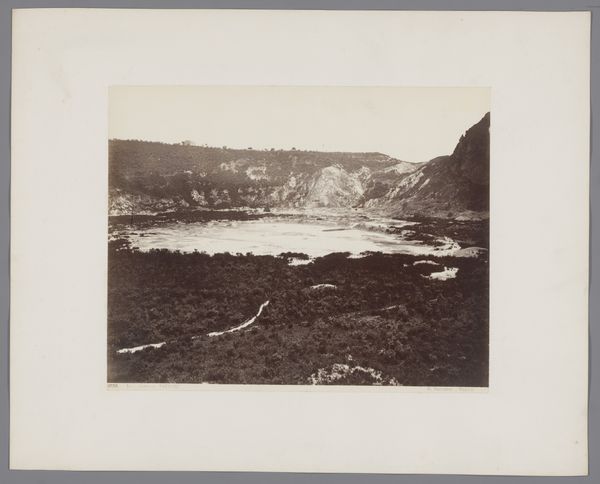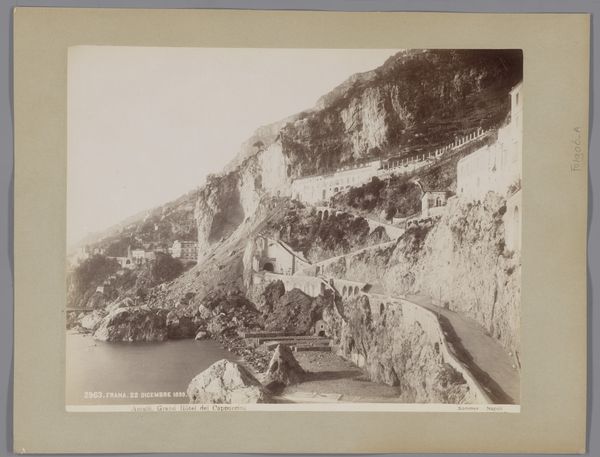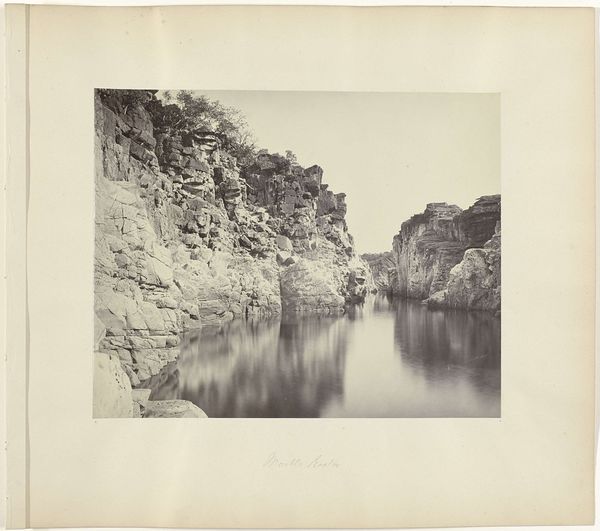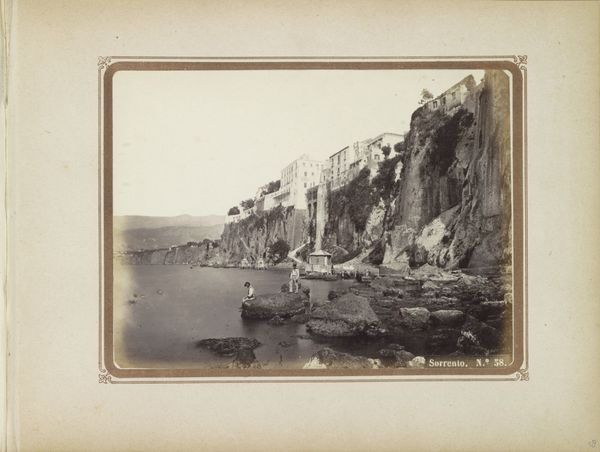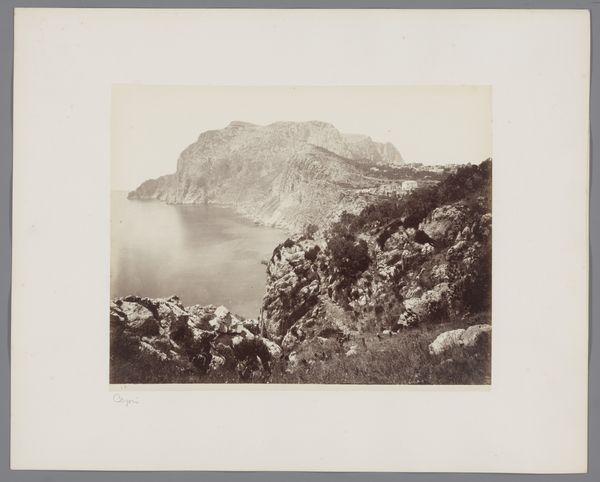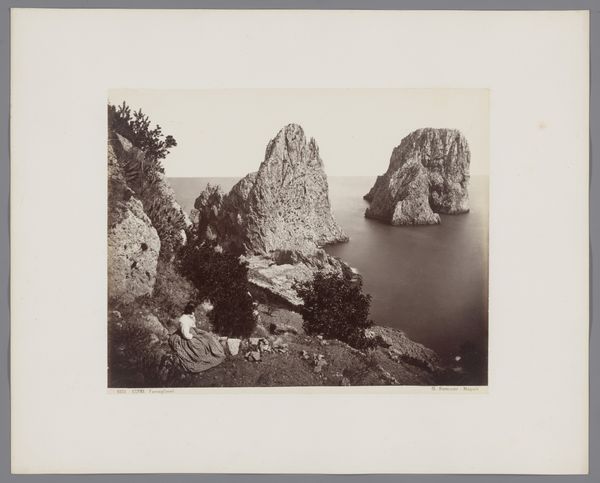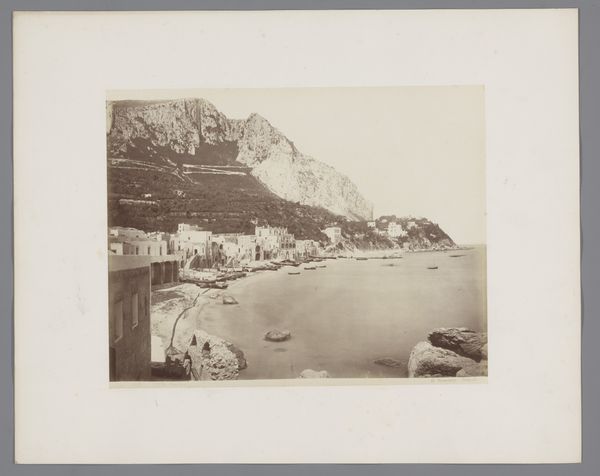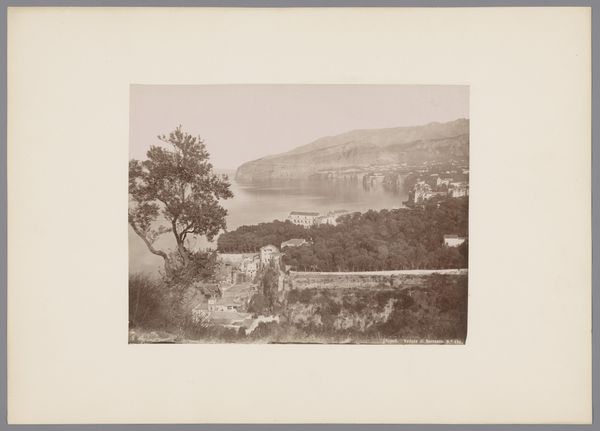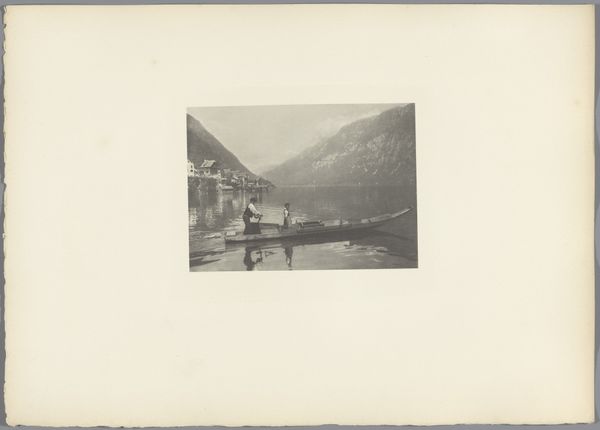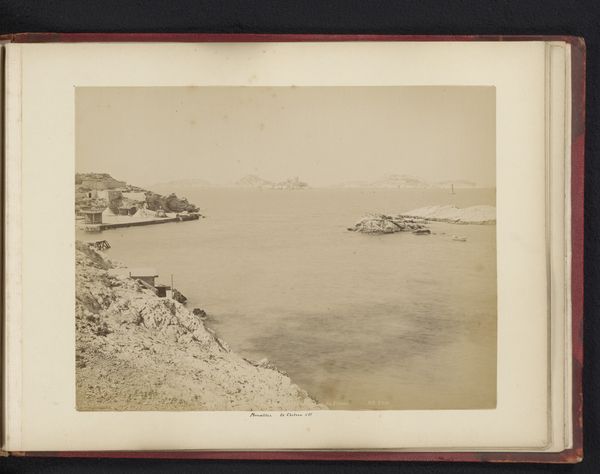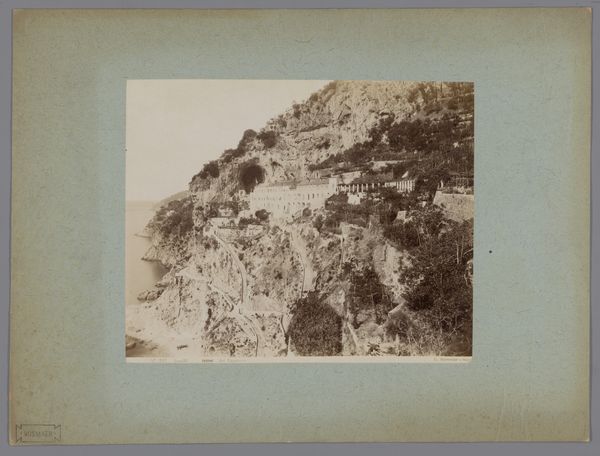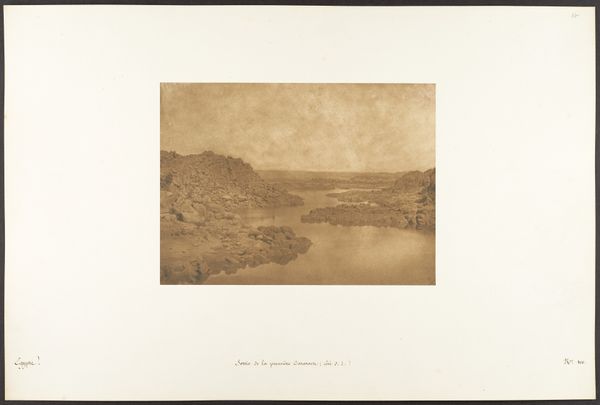
print, photography
#
pictorialism
# print
#
landscape
#
photography
#
realism
Dimensions: height 315 mm, width 421 mm
Copyright: Rijks Museum: Open Domain
Editor: Here we have Giorgio Sommer's photograph, "Gezicht op Amalfi, Italië," likely taken between 1857 and 1914. It's a sepia-toned print that really captures a serene, almost dreamlike, view of the Italian coastline. The way the light reflects on the water creates a stunning sense of depth. What stands out to you when you look at this image? Curator: What I find fascinating is how this landscape photograph, seemingly straightforward, can be read through a lens of power and representation. Amalfi, even in the late 19th century, was a site of tourism, and therefore, a space of colonial gaze. Who was invited to enjoy this view, and whose labor maintained its idyllic appearance? Editor: That’s a perspective I hadn’t considered. So, you’re saying we should think about who *isn’t* in the picture, too? Curator: Precisely. Sommer's aesthetic choices—the soft focus characteristic of pictorialism, for example—idealize the scene. Whose narratives get prioritized in such idealizations? Were the local inhabitants of Amalfi, their everyday lives and struggles, part of this romantic view offered to the European tourists? Editor: So, it becomes about unpacking the constructed nature of this beautiful image? Curator: Exactly. And challenging the notion of a neutral landscape. Photography, even then, wasn’t just capturing reality; it was framing it, selecting it, and, in doing so, shaping the viewer's perception. What we are not shown becomes just as important as what is. Editor: That's really compelling. I'll definitely be looking at landscape photography with a more critical eye from now on. It's incredible how much context can change your understanding of something so seemingly simple. Curator: And remember, it is vital to ask ourselves what an image like this meant then, but also, what does it mean today, and to whom? Art always exists in relation to its viewers, its time, and its political implications.
Comments
No comments
Be the first to comment and join the conversation on the ultimate creative platform.
